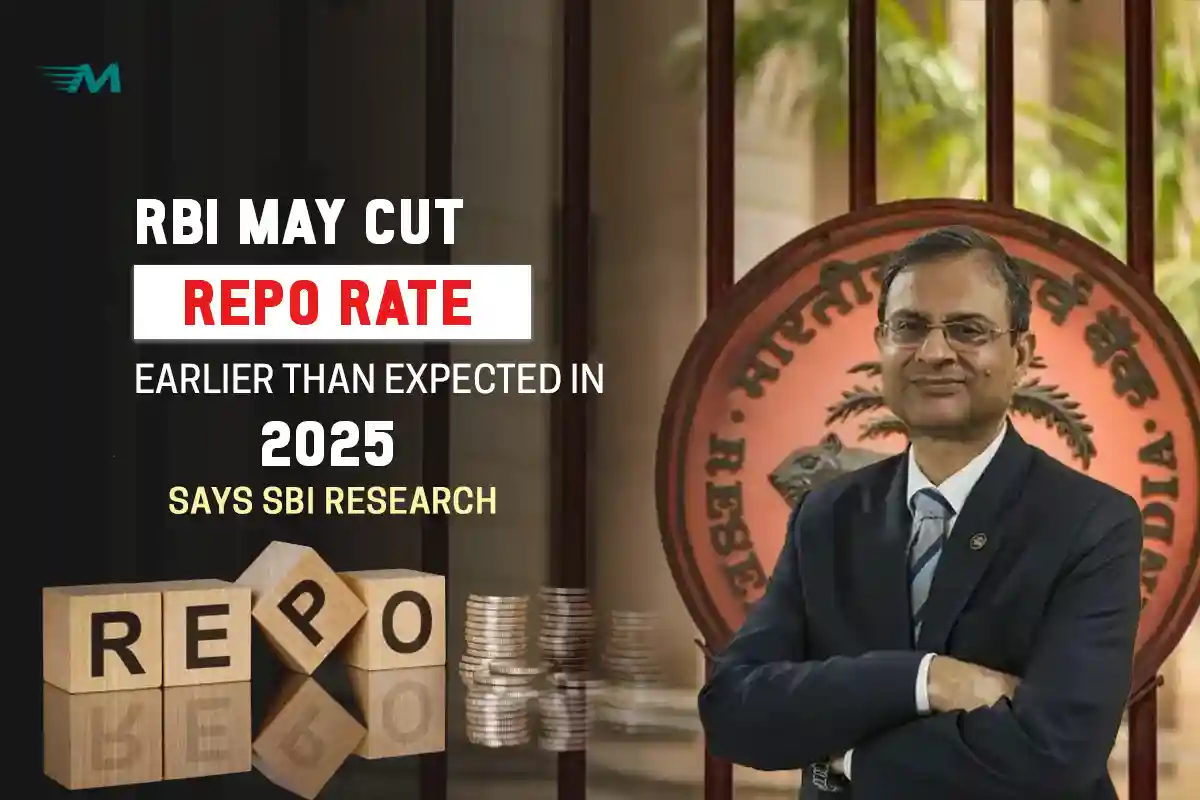RBI May Cut Repo Rate Earlier Than Expected in 2025, Says SBI Research
India’s largest public sector bank, State Bank of India SBI, through its economic research wing SBI Research, has recently projected that the Reserve Bank of India (RBI) might cut the repo rate earlier than previously expected possibly in the first quarter of 2025. This expectation comes as a significant shift in the central bank’s monetary policy direction and has major implications for borrowers, investors, and the broader economy.
What Is the Repo Rate and Why Does It Matter?
The repo rate is the interest rate at which RBI lends short-term funds to commercial banks. It’s a crucial tool in the hands of the central bank to control inflation, manage liquidity, and maintain overall economic stability.
- A lower repo rate makes borrowing cheaper, which boosts consumer spending and business investment.
- Conversely, a higher rate helps contain inflation by discouraging excessive borrowing.
As of now, the repo rate stands at 6.50%, where it has remained unchanged for several months. The RBI has taken a cautious stance in its fight against inflation, but the winds might be shifting in favor of rate easing.
Why Is a Rate Cut Likely in Early 2025?
1. Declining Inflationary Pressure
SBI Research suggests that inflation is cooling faster than expected. The Consumer Price Index (CPI) has shown signs of stabilizing within the RBI’s comfort zone of 2–6%. If this trend continues, the central bank could have more room to reduce the repo rate to stimulate growth.
2. Global Rate Cycle Shift
Central banks in advanced economies like the US Federal Reserve and the European Central Bank are expected to begin easing their own interest rates in late 2024 or early 2025. India typically aligns its rate cycle with global trends to manage capital flows and currency stability.
3. Need to Support Economic Growth
While India’s GDP growth remains robust, certain sectors—especially manufacturing, real estate, and MSMEs are feeling the heat of high borrowing costs. A repo rate cut would ease this burden, potentially fueling credit expansion and job creation.
What Does This Mean for Investors?
If you’re an investor, here’s how a possible rate cut in early 2025 could affect your strategy:
Equity Market
- Lower interest rates generally benefit stock markets, especially sectors like banking, real estate, infrastructure, and consumer goods.
- With reduced borrowing costs, corporate profitability could improve, leading to bullish sentiment in the markets.
Fixed Income Instruments
- Bond prices usually rise when interest rates fall, so existing bondholders might gain.
- However, new fixed deposits (FDs) or debt funds might offer lower yields, so rebalancing your debt portfolio may be wise.
Real Estate and Housing
- A repo rate cut often triggers a reduction in home loan interest rates, which is great news for prospective homebuyers.
- This can also spur investment in real estate as an asset class.
Impact on Common Consumers
For the average Indian consumer, lower repo rates typically translate to cheaper EMIs on loans. Whether it’s a home loan, car loan, or personal loan, the cost of borrowing goes down. This increases disposable income, thereby pushing up demand for goods and services.
In short, rate cuts can boost consumer confidence, leading to higher spending and consumption.
RBI’s Balancing Act
Despite positive indicators, the RBI is expected to move cautiously. A premature rate cut could:
- Risk inflation flaring up again,
- Or impact India’s currency stability amid volatile global markets.
Hence, the RBI is likely to wait until early signs of global rate easing emerge and domestic inflation is well under control before moving forward.
Conclusion:
SBI Research’s forecast that the RBI may reduce the repo rate in early 2025 signals an upcoming monetary policy shift that could influence everything from loan affordability to stock market dynamics. Whether you are an investor, a borrower, or a business owner, staying informed about these macroeconomic developments is crucial.
Investors and entrepreneurs should begin planning now, factoring in cheaper capital and changing consumption patterns. Meanwhile, individuals looking to borrow should keep an eye on early 2025, which might present better financial opportunities.


